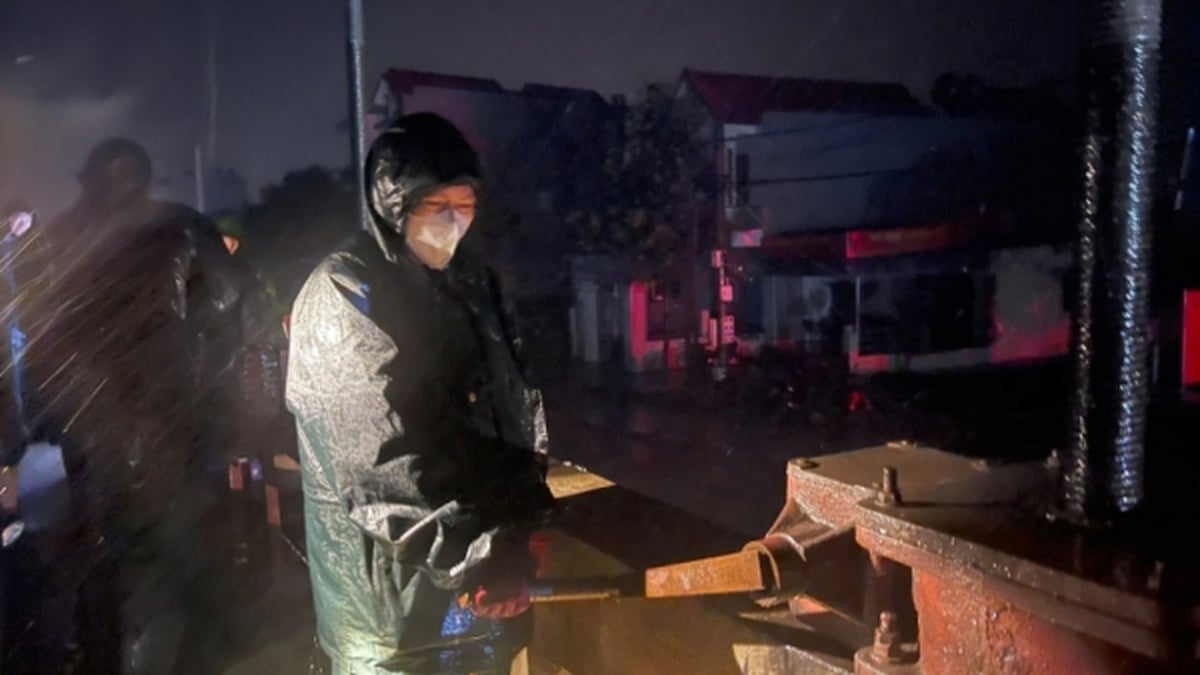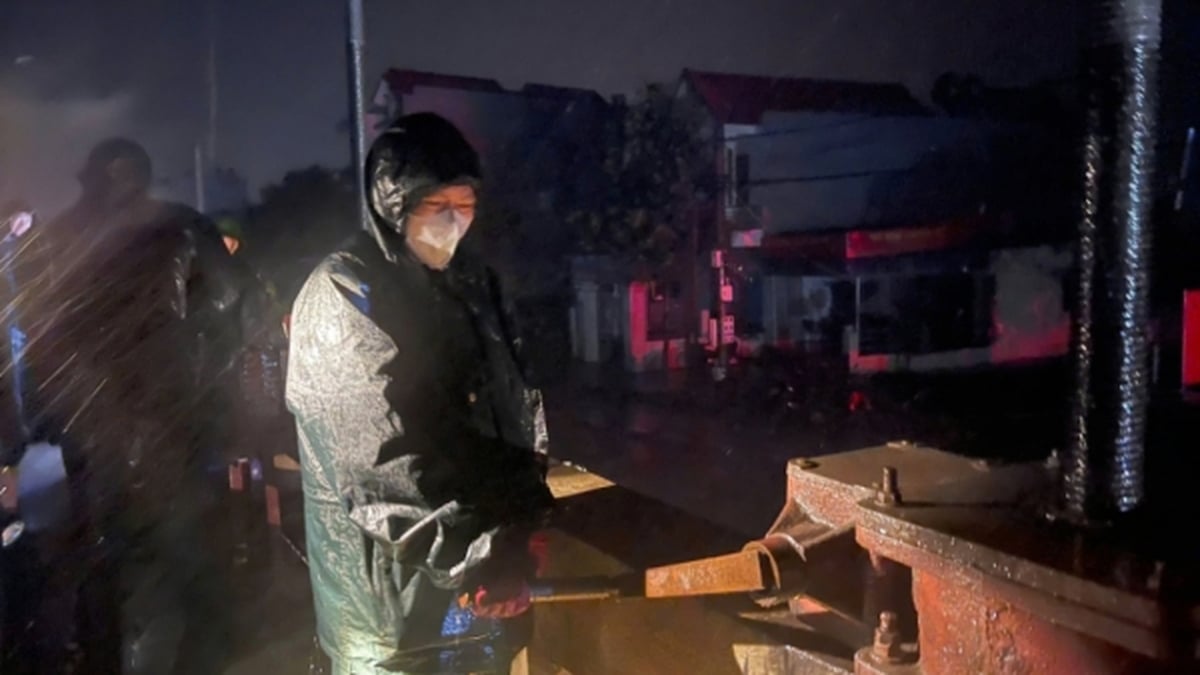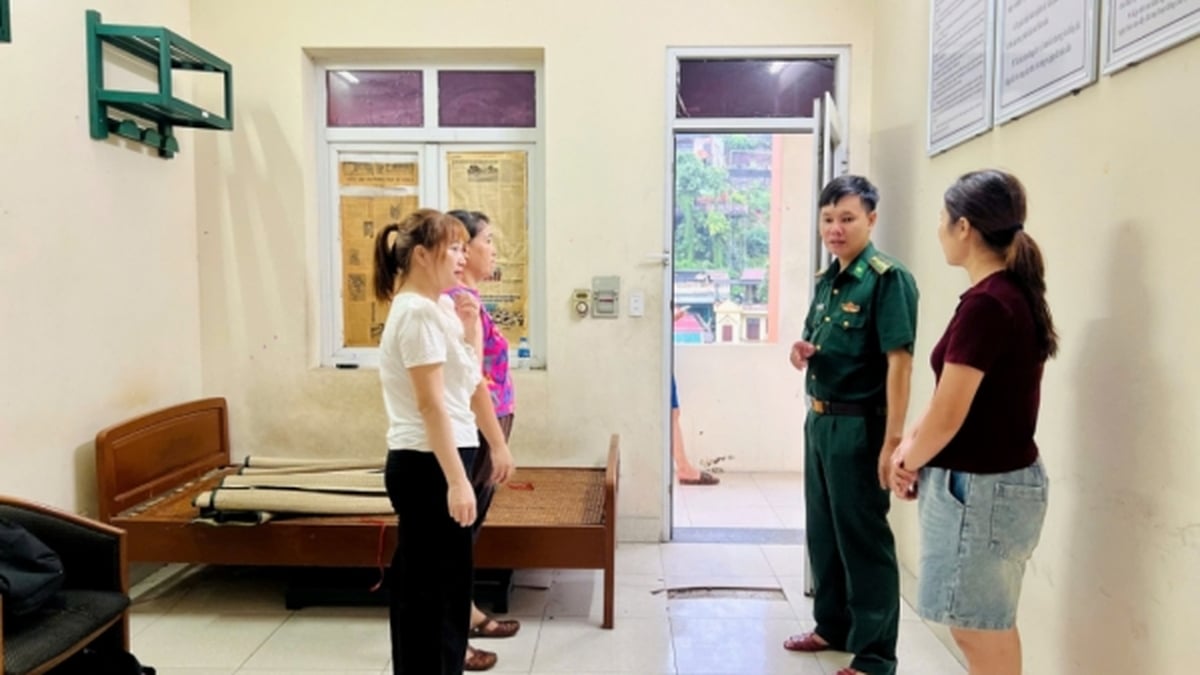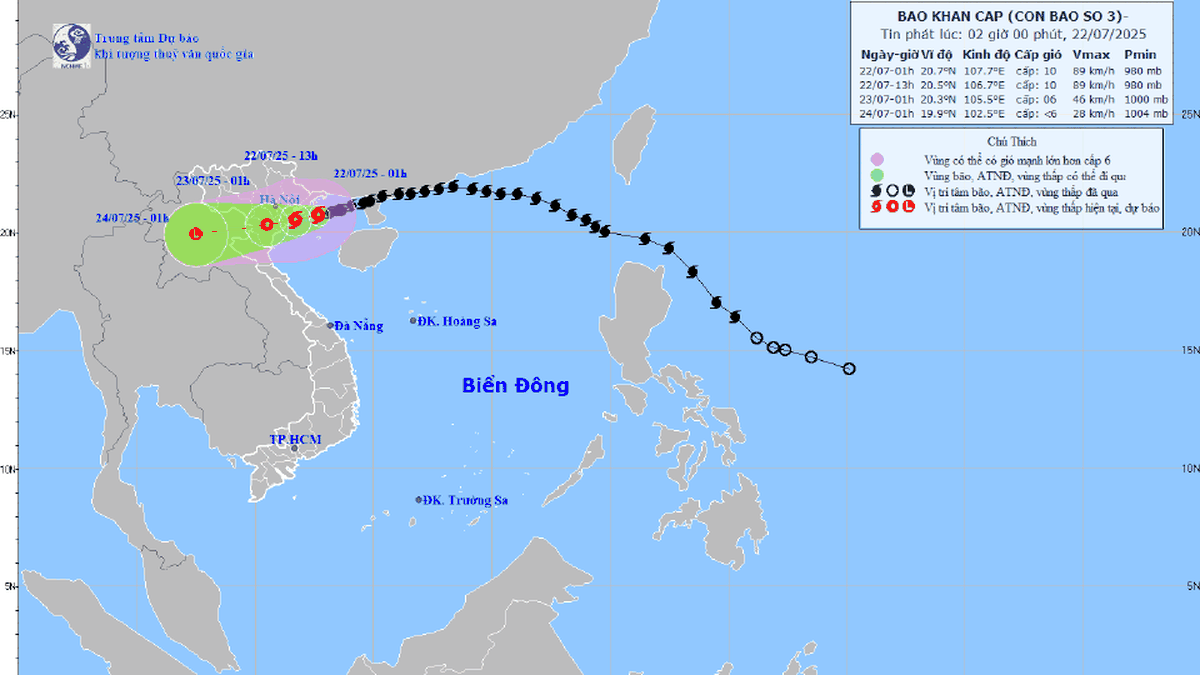This is how the elderly in Hamlet 1, Ben Củi Commune, Duong Minh Chau District call the rock worshiped in the temple of Mr. Ta Ben Củi. It is not called Mr. Stone, Mr. Ta, but simply Mr. Ta's Rock. From the outside, the rock looks like a granite (green stone), with a slightly narrow cylindrical shape. One end of the rock is slightly round, the other end is flat.
The stone is now placed in the most solemn position on the main altar, where in Vietnamese communal houses the word "than" is often placed, symbolizing the tutelary god. The stone is 70cm high, 35cm wide at its widest point, placed upright, with a flat top as a base. The surface of the stone is slightly rough and uneven. There are many legends about the stone, passed down from the time when settlers opened up the land and established villages.

Stone altar of Mr. Ta.
According to Mr. Dang Thanh Lap - Deputy of the Temple Management Board, the stone has been there since the time his great-grandfather, Mr. Dang Van Lieu, came to Hamlet 1, Ben Cui to make a living. Mr. Lieu was born in 1830 and died in 1930. He came to Hamlet 1 when he was 25 years old, that is, in 1855. This detail was confirmed by historical events. That was 3 years after Mr. Lieu came to Ben Cui, the French-Spanish coalition fired the first shot at Da Nang (1858).
According to author Phi Thanh Phat, in the article "The predecessor Dang Van Truoc and the contributions of the Dang family in Tay Ninh (Tay Ninh Land and People, Thanh Nien Publishing House, 2020), "The Dang family set foot in the Ben Don area (Bung Binh hamlet, Hung Thuan commune, Trang Bang town)... very early, from the time of his grandfather Dang The Thoi, and his father Dang The Pha of Dang Van Truoc.
The Dang family originated from Quy Nhon (Binh Dinh) in Quang Nam town, came to this Quang Hoa land to live, reclaim land, establish villages. From here, at Thanh Luu fort (Ben Duc citadel - TV), an important royal office base was formed in the upper reaches of the Saigon River, commonly known as Ben Don, which is also the original hometown of the Dang family in Tay Ninh...".
Originally from Ben Don, there was also Thanh Luu fortress, an important place for Tay Ninh workers and Gia Dinh citadel, so from here when this land developed, people multiplied. It was not strange that a branch of the Dang family went upstream of the Saigon River to find new lands.
And Hamlet 1, Ben Củi is the place where Mr. Dang Van Lieu and his family chose to settle down and make a long-term career. Mr. Dang Thanh Lap still remembers the stories passed down from his ancestors. That was when he arrived here, only 25 years old, Mr. Lieu went into the forest and suddenly found a rock as big as a pillow, stuck between two branches of a Barringtonia acutangula tree.
At night, lying in a feverish coma, he saw the “man” who had been riding a bronze drum come back and call himself Mr. Ta Sai. When he woke up, Mr. Lieu thought that he might be scolded for something! So his brothers gathered together to build a small temple and brought the stone man back to worship. At first, the temple was only made of four green pillars, a few bamboo panels, and a roof of ten sheets of leaves.
When the French occupied Ben Củi and established a rubber plantation in the early 20th century, the plantation owner provided bricks, tiles, cement and a few corrugated iron sheets to build a temple. The temple of Mr. Ta was known to be sacred. Anyone who lost a cow or buffalo could come and burn incense and pray and find it again. Anyone who was slightly ill could come and worship and burn incense and be cured. Gradually, many people in Hamlet 1 came to worship at the temple of Mr. Ta on the 7th day of the first lunar month.
From here, there are several stories that sound like legends. The first story is about a shaman in Don Thuan named Master Dep. Hearing rumors about the sacredness of the Stone of the Evil Spirit, he drove his cart there in the dead of night to steal the Stone of the Evil Spirit. Unexpectedly, when the cart reached Ba Tung's hole, the wallet broke. The stone rolled into the woods, and the shaman went home. That very night, the stone rolled back to the old temple.

Stone of Mr. Ta Ben Cui.
Comparing with the altar of Mr. Ta in Dong Thap, a province in the Southwest (through the work Dong Thap Folk Literature), we can see similarities. Tran Thanh Ha wrote: “Mr. Ta is worshiped on a tree trunk, if a stubborn child throws him into the field, he will definitely return to his original place a few days later…”.
Le Kim Hoang said: “Around the 50s and before the century. People built a temple to worship. The Evil Spirit here was very sacred! Children who were sick would come to pray to the Evil Spirit and be cured. People in the village and surrounding areas, when they had a problem, would pray to the Evil Spirit, and they would be safe and have good luck…”. The symbols of the Evil Spirit here are also round or oval stones: “The Evil Spirit was also covered with a red cloth. The black Evil Spirit represents Yin, covered with red cloth represents Yang, the two elements of Yin and Yang are in harmony, balanced, creating vitality…” etc.
The Stone of Mr. Ta in Hamlet 1, Ben Củi is even more special, thanks to a legend. Mr. Dang Thanh Lap and some elderly people living in Hamlet 1 assert that: - The Stone of Mr. Ta is still growing. Because according to the stories of the great-grandfathers and grandfathers, at first the Stone was only the size of a baby pillow, that is, about 50cm long and about 15cm in diameter. But now the Stone has the corresponding sizes of 70cm and 35cm.
The Dang-Ben Củi family cemetery is only a few dozen meters from Mr. Lap’s house. There is still a blue stone tombstone on a small mound of earth of the ancestor Dang Van Lieu, who came here in 1855 and founded the Ta temple. Pondering next to the rough, primitive tombstone, Mr. Lap recalls the year 1965, full of hardship and pain in his hometown of Ben Củi.
He said that year, the people of Hamlet 1 had to flee to Dau Tieng because Ben Cui was turned into a white zone by the US and puppets, bombed and bulleted everywhere. From here to the temple is only over 200m, but when returning, there were 4 bomb craters, including the kind of pond bombs that created deep holes. Yet the ancestor's grave and the Ta temple were still intact.

French housing area at Ben Cui rubber plantation 1930.
Looking from the temple to the Southeast, you can see a tall tree area covering the ancient tower mound. The mound is only about 300m from the temple. So in just this triangular area of 300m each way, Ben Cui still preserves a thousand-year-old tower underground. It is worth the attention of cultural management agencies, researching and registering it as a historical-cultural relic in the province.
Tran Vu
Source























![[Photo] National Assembly Chairman Tran Thanh Man visits Vietnamese Heroic Mother Ta Thi Tran](https://vphoto.vietnam.vn/thumb/1200x675/vietnam/resource/IMAGE/2025/7/20/765c0bd057dd44ad83ab89fe0255b783)













































































Comment (0)